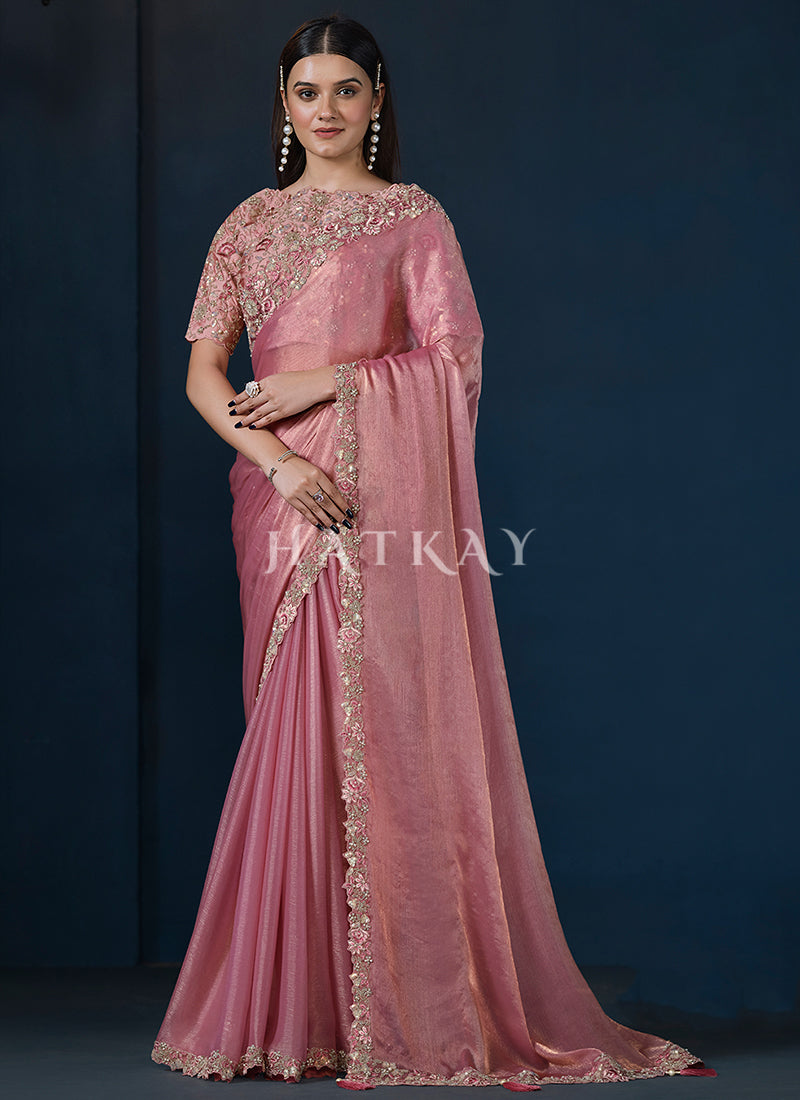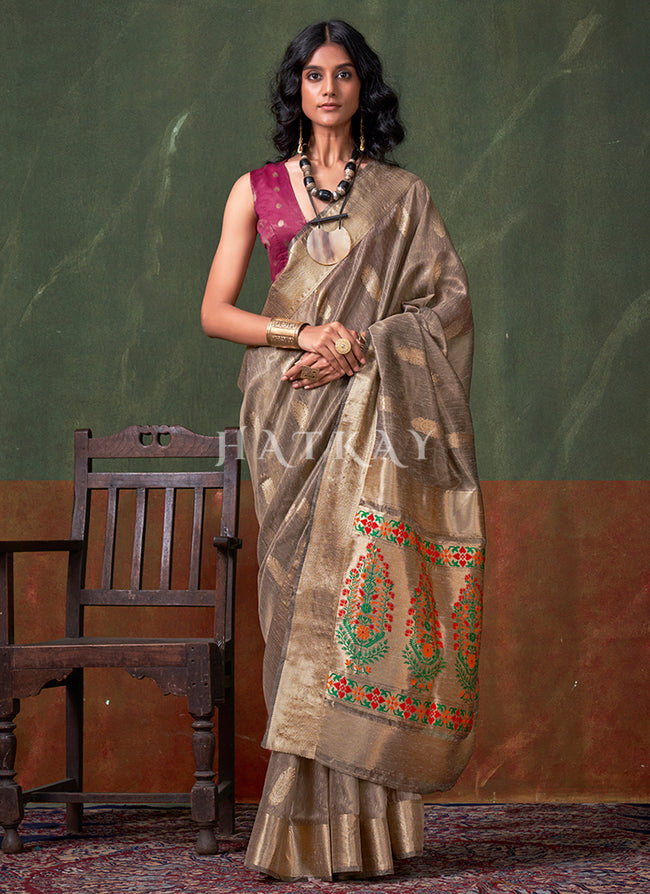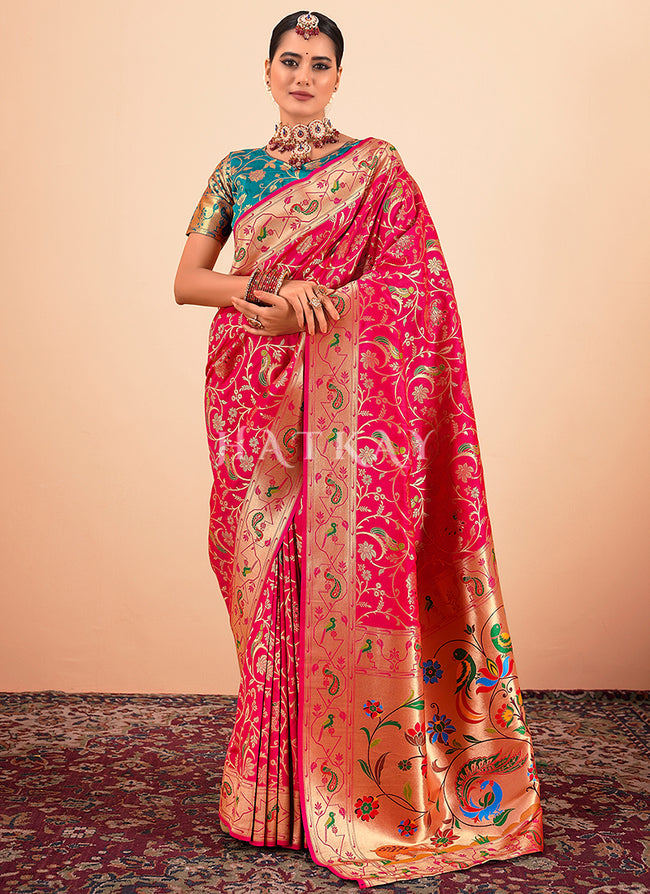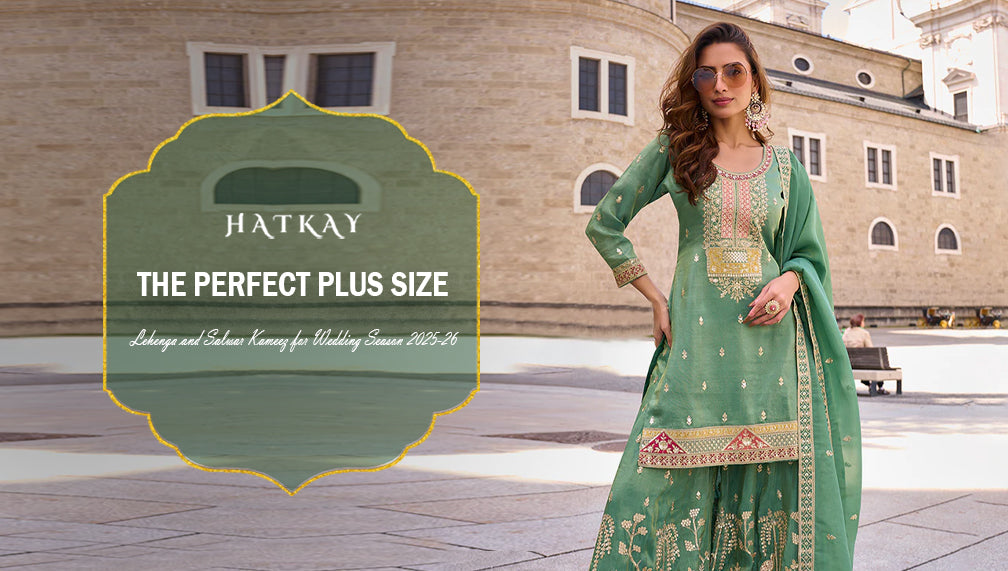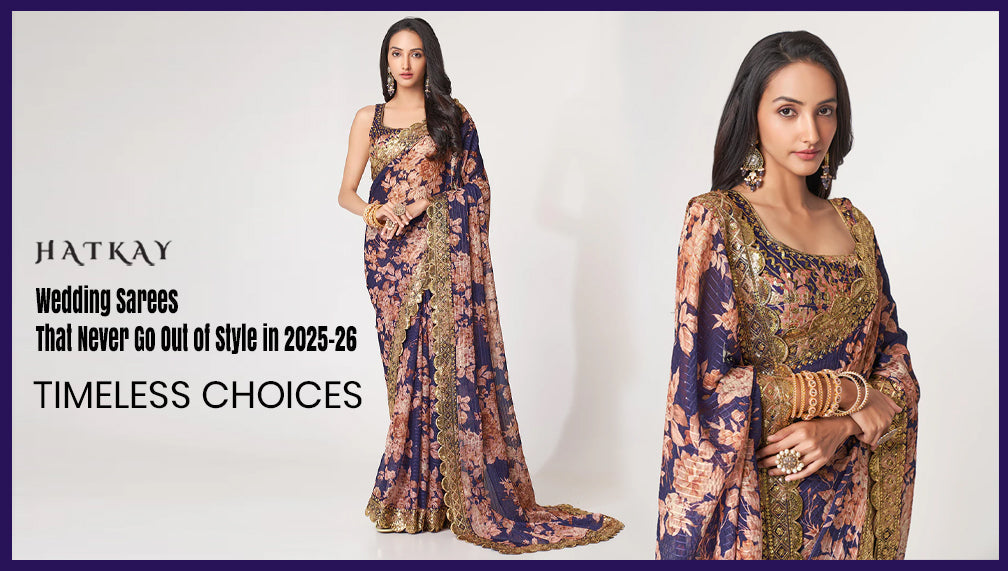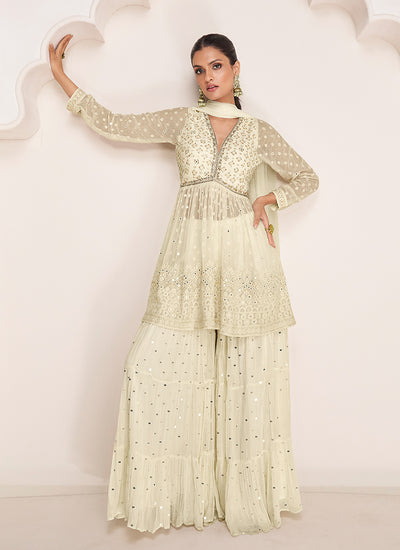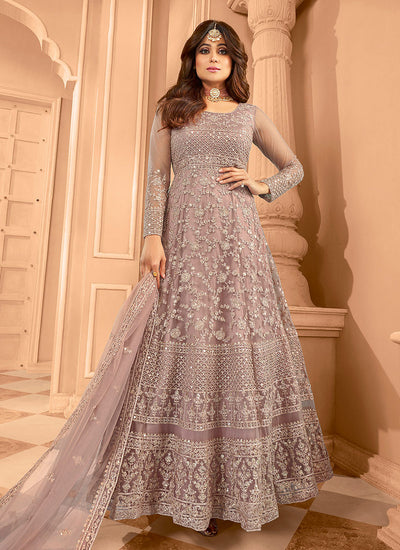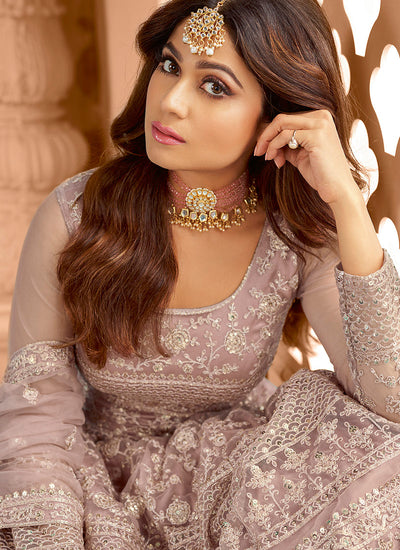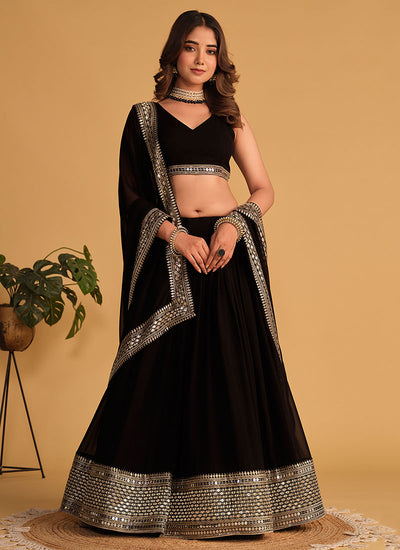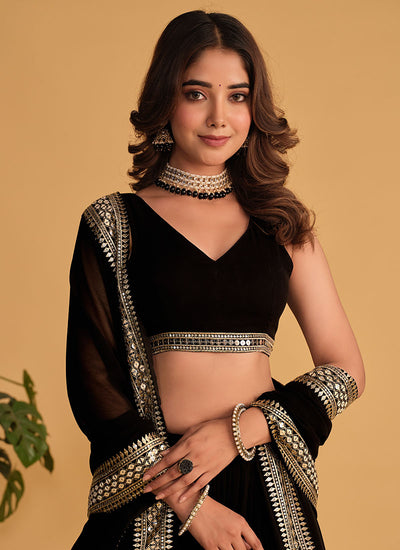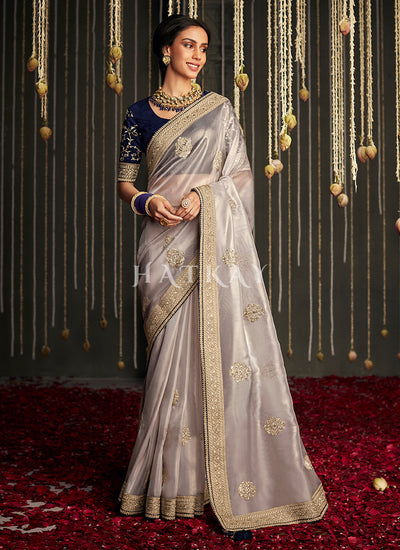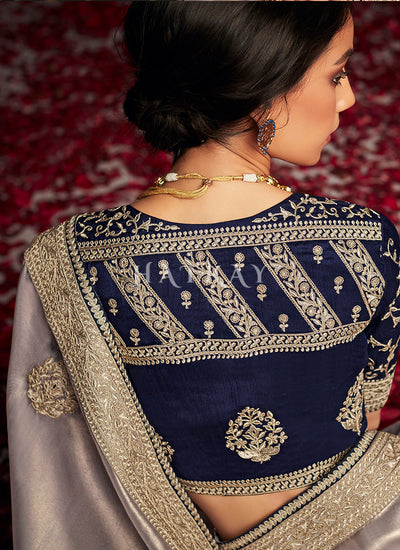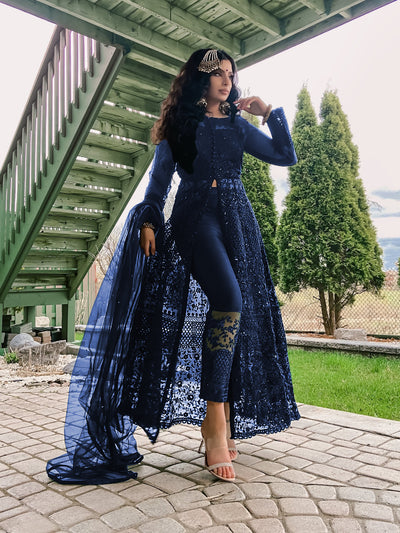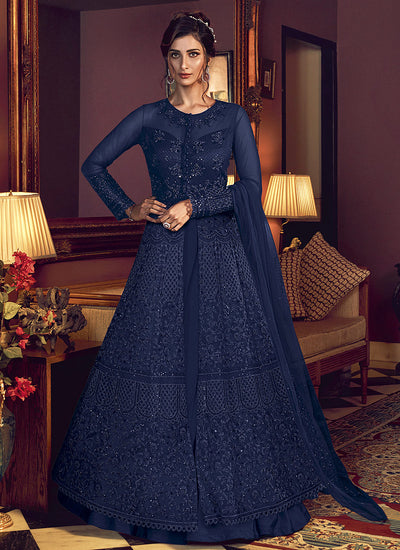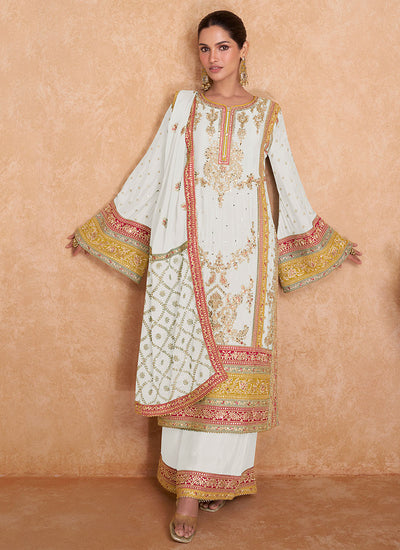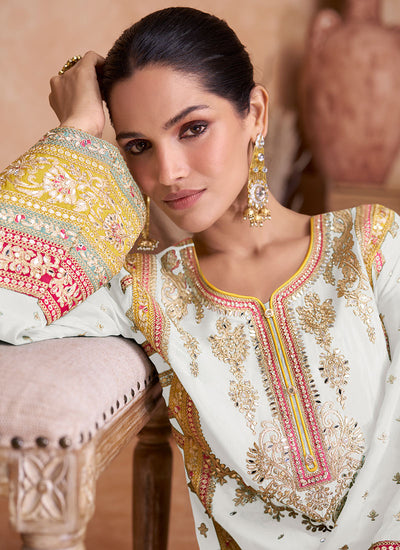
Unveiling Timeless Chikankari Saree Styles You Haven’t Heard Of
Chikankari — the delicate and elegant embroidery from Lucknow — has always been associated with grace, tradition, and timeless craftsmanship. While most of us are familiar with the classic white-on-white cotton sarees, there’s an entire world of rare and lesser-known Chikankari saree styles waiting to be discovered.
In this blog, we uncover hidden gems in the world of Chikankari that blend heritage with innovation, offering something truly unique for every saree lover.
1. Mukaish Chikankari: Where Metal Meets Thread
You may have seen Mukaish work in festive wear, but when fused with Chikankari, it creates a breathtaking effect. Fine silver or gold metallic threads are handwoven into the fabric along with intricate Chikankari embroidery, making these sarees ideal for weddings, parties, and festive evenings.
Style Tip: Pair with oxidized silver jewelry and a sleek bun for a Mughal-inspired royal look.
2. Georgette Chikankari Sarees with Ombre Dyes
While cotton remains a staple, the use of georgette fabric in contemporary Chikankari designs has elevated this art form. What makes these special? Ombre-dyed georgette sarees with subtle tonal gradients, hand-embroidered with shadow work and phanda stitches — a visual treat and feather-light on the skin.
Style Tip: These sarees drape like a dream — perfect for cocktail nights or casual elegance.
3. Chikankari with Kamdani Embellishments
Kamdani work, also known as badla, is another vintage metal thread technique that’s being revived alongside Chikankari. These sarees often feature moonlight shimmer and are an understated alternative to sequin-heavy attire.
Why You Haven’t Heard of It: Kamdani-Chikankari sarees are usually bespoke or custom-made due to the level of detail involved, making them rare finds in mainstream markets.
4. Organza Chikankari Sarees with Appliqué Detailing
Organza is having a moment in fashion, and when combined with delicate Chikankari and subtle appliqué motifs, it creates a statement of quiet luxury. These sarees are ethereal, lightweight, and carry a modern appeal without losing their traditional roots.
Style Tip: Pair with pastel blouses and pearl accessories for daytime weddings or garden soirées.
5. Dual-Toned Chikankari Sarees Inspired by Nature
These sarees break away from monotone traditions. Featuring dual-colored threadwork inspired by flora and fauna — think lavender and mint green or rust and teal — they celebrate nature in a truly artistic way.
Why They’re Special: These are often artisan-made and not mass-produced, making each saree one-of-a-kind.
6. Tussar Silk Chikankari Sarees for the Connoisseur
Tussar silk, with its raw texture and natural sheen, offers an earthy canvas for Chikankari work. The juxtaposition of coarse silk with delicate embroidery is captivating. These sarees are perfect for those who want to make a subtle yet powerful statement.
Style Tip: Go minimalist — let the saree speak for itself with simple studs and a bold bindi.
The Revival of Forgotten Elegance
Chikankari is more than embroidery — it's a legacy of patience, precision, and passion. These lesser-known styles are not just variations, but reinventions that keep the heritage alive in the modern world. Whether you’re a saree collector, a fashion enthusiast, or simply someone who values artisanal beauty, these hidden Chikankari styles are worth exploring.
So, next time you’re on the hunt for something truly unique, skip the obvious. Choose a saree that tells a story — one thread at a time.













